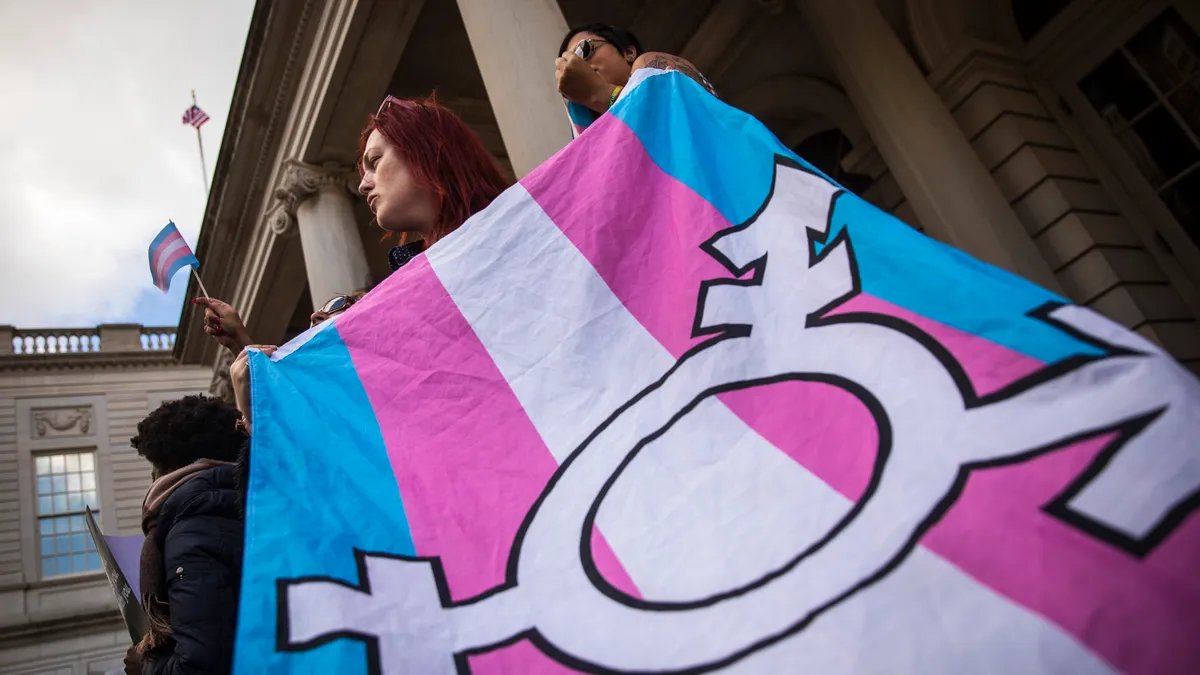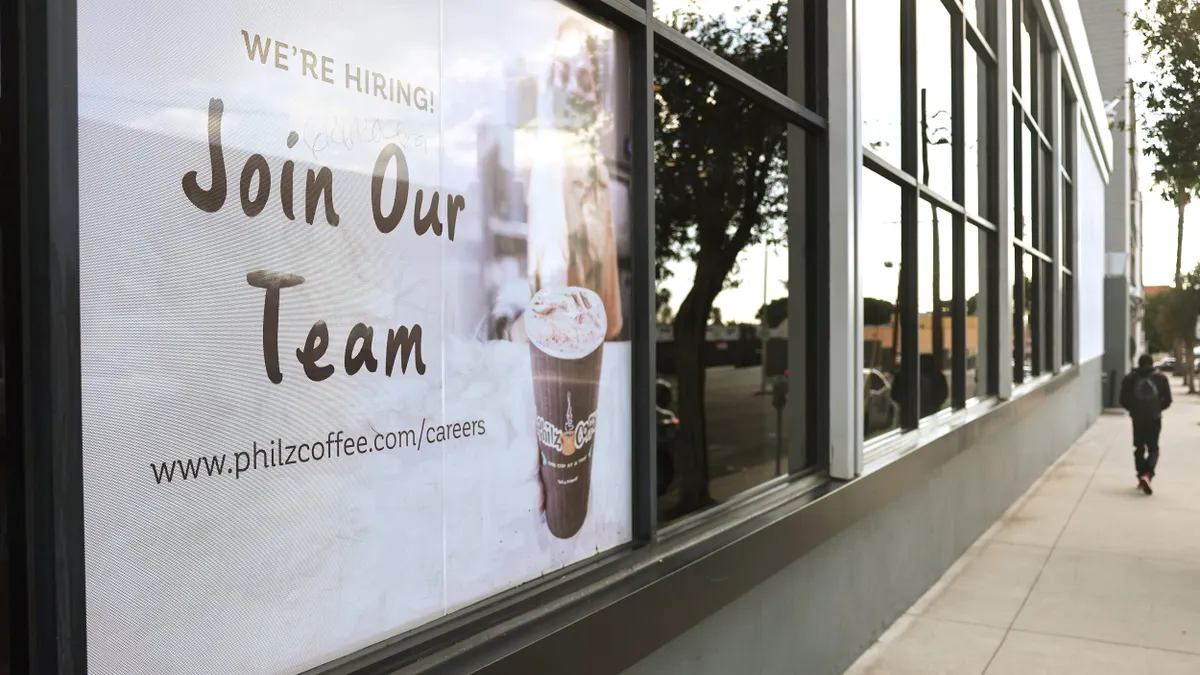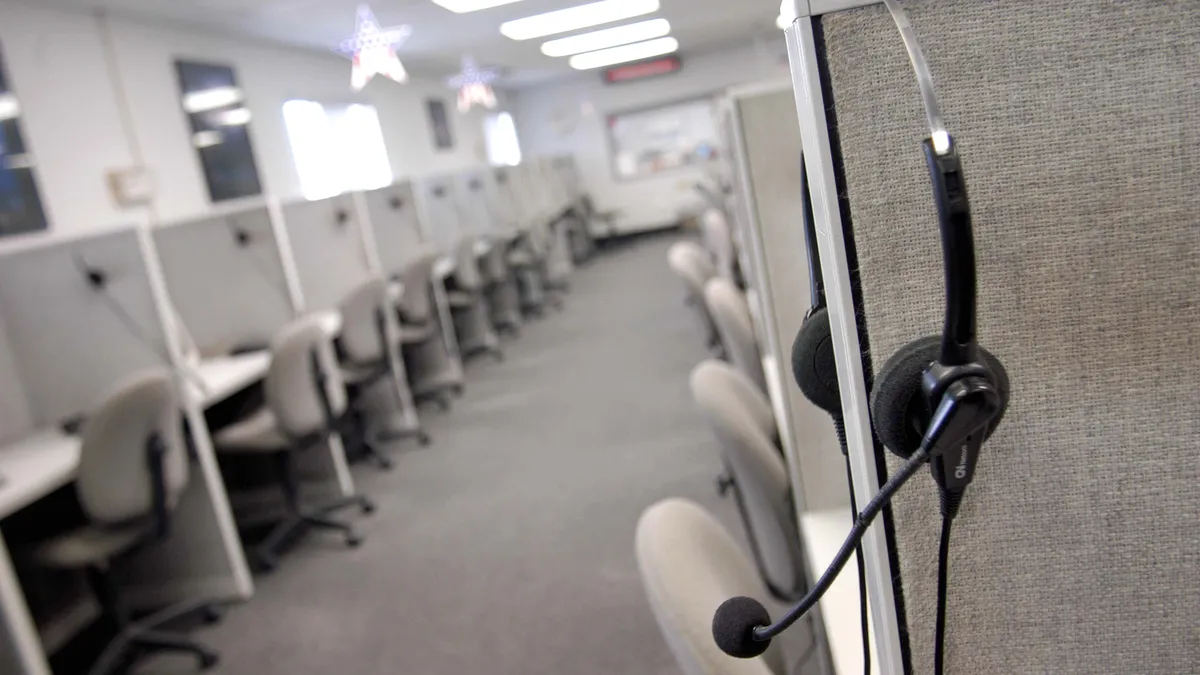Connecting employees to LGBTQ personal development resources can bring about critical change on their career path. However, gay and transgender professionals also need an environment in which they can thrive. Data from a 2018 Human Rights Campaign study suggests about 1 in 3 LGBTQ workers fear coming out due to stereotypes, the risk of making colleagues uncomfortable or losing co-workers.
Additionally, HRC's findings confirm hostile workplaces drive gay and trans employees to disengage: 13% and 17% of respondents said they feel exhausted from keeping their gender identity and sexuality, respectively, a secret. Likewise, 25% of respondents said that their unwelcoming work environment is distracting. Some went as far as to say they avoid office parties, happy hours, and lunches because they feel unwelcome.
Tauhidah Shakir joined Paylocity as its chief diversity officer and vice president of human resources in August 2020. But she had worked with the payroll and HRM software developer for two years prior as a diversity and inclusion consultant. In the year since she joined, Shakir has been advocating for honesty and collaboration between leadership and employees — especially LGBTQ employees at Paylocity.
Editor's Note: This interview has been edited for clarity and brevity.
HR Dive: In the press release about you joining Paylocity, something that stuck out to me was when you said you want to cultivate a workplace “where employees can bring their whole selves to work.” Can we talk about that in regard to LGBTQ identity?
TAUHIDAH SHAKIR: It's being able to talk about your partner and having more gender expansive policies. We're not just saying, 'Bring our whole selves to work,' and then we can't support that. Or we don't know how to have those conversations. It is not only saying that you are tolerant. But that you're welcoming and you're building an infrastructure to support them, which goes from benefits to policies to employee resources to creating that safe space for folks to be able to speak and talk and ask questions.
Can you tell me a bit about the LGBTQ employee resource groups at Paylocity?
It's really grassroots. All of our ERGs are funded by the organization, but we really want to make sure that they're employee-led. We don't want to have leaders get into a room and come up with things that we think would support the LGBTQ community. We started off having focus groups and listening sessions. Once the ERGs were established, then we really listened to our ERG leaders.
Anyone can have an event or have a moment. But it's more about legislation and making sure that we are supporting not just for our employees, but for the community as a whole. D&I is very broad and each community has specific needs. A lot of the work that we do comes from our ERGs sparking conversations and saying, 'Hey, have you thought about this?' or 'Is this something that we could do?'
When you talk about supporting LGBTQ folks outside of Paylocity employees, do you mean policy advocacy or volunteering? Can you speak some more about that?
When it comes to the [LGBTQ] business coalition, it's just being a part of a group of corporations that are saying, 'We want equality for the LGBTQ community. We want to make sure that folks in the community are treated fair and equally across the board.' So it's not just about wanting to do that and have that behavior within our organization, but we want to make sure that when we have an opportunity to support that legislation as well.
What has the feedback been from queer and trans people at Paylocity when it comes to climate?
What I've heard from employees is just that it's really refreshing to not only hear the language but also see the behaviors and action and be a part of the change. I'll be the first to say that a lot of this is new for a lot of us. So we're pulling on them, asking for partnership, guidance and collaboration to bring these things to life… [for example] our policies around bathroom etiquette.
How would you recommend that either diversity officers or HR leaders go about advocating for gender neutral bathrooms? What should they say to their employers and what kind of considerations should they work through?
Having the conversation with the education piece is so important. Letting people know why we are doing this. And then if you get questions, if you get pushback, how do you have those conversations? How do you support your employees or co-workers?
The policy is one piece, but the behavior [is another]. You can't teach empathy, but you can talk about and demonstrate behaviors that will be supportive and empathetic. I think that part is really more important because it's not about slapping someone's hand. It's more about: How do we embrace our co-workers in this community?
I think about this often, whether we're talking in the workplace, or society as a whole, especially with 'cancel culture.' If you're calling people out or giving them a slap on the wrist, the conversation becomes about that conflict, and not about the original issue, which is maybe harm that's being done or a lack of resources for a certain group.
It's unfortunate when you slap someone on the wrist who truly doesn't know and who truly needs to be educated. Now they're defensive and they don't even want to talk about it or address it. All they remember is that they got their hand slapped and so now it's just something that they steer away from. It shouldn't be punitive.
Even though these communities have existed for hundreds of years, this is the first time that society and organizations are welcoming this. We're [now] saying, 'Come in, bring your whole self.'
It's interesting to think about the fact that even though identity and lived experiences have longevity, the actual conversations and practical considerations are fresh. To that point, let's talk about transition policies. What should HR professionals consider when it comes to supporting people who are in the midst of gender expansion or transition?
One of the biggest things is benefits. You want to have trained professionals who can speak to the employee who's going through it and [have them] understand what their medical options are. We've also looked into support for the families of the folks who are transitioning. A lot of times, they need education and support as well. It's also a big financial burden, sometimes, to take that on. From the medical perspective, we want to make sure that someone understands what's covered and what's not.
The third tier is making sure that the leaders understand how to support someone who's gone through that and is coming back into the workforce. What pronouns do they want to use? Maybe they've changed their name or they haven't. Maybe they're using different facilities. They may be dressing differently.
I've worked in organizations where [the attitude has] been: Let's ignore it and act like it's not happening. You say that you embrace someone and that you're welcoming them. They've gone through a huge change. This is big for them, and then you act like it didn't happen? That's not the best approach.
But you also don't want to put the spotlight on someone who's going through something that is very personal to them. They may not want to talk about it. So find that balance but be open to having the conversation — and that always goes back to that individual's preference. A policy or a training module cannot replace the one-on-one conversation.
If an HR leader or a diversity officer has someone who comes to them and says, 'Hey, I'm open to having a conversation about my transition,' or 'I'm open to people knowing about it,' what is the best medium for those conversations? Do you think it's a meeting? Do you think it's a Slack message saying, 'Hey, I'm open for questions!' Or do you think it's an email to the team saying, 'Hey, this person uses new pronouns, they use a new name, and the doors open for conversation?'
The HR leader should partner with the employee and say, 'Let's have a conversation about your preference on how we should handle this situation.' Do you want to send an email? They may not want the leader to send an email and steal their thunder. [They may say,] 'In our next meeting, I'm open to focus on any questions.' Folks may say, 'I'd rather not have a conversation, but if folks want to approach me one-on-one, I'm open to that.' So again, it's that collaboration. Treat it with sensitivity.
Take their lead on how they want to handle it, because I can imagine for some folks, having that conversation at a team meeting would be very off-putting. For other folks, they're like, 'I want to use my experience as a platform and I would love to get five minutes at a meeting.' But you just have to have the conversation to understand.





















